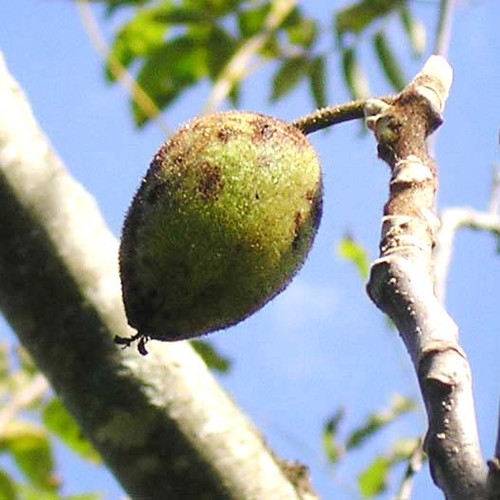Cannot Ship To: AK,HI
Please Read Our Store Policies HERE Before You Order!!
Introduction:
The Black Locust Tree (Robinia pseudoacacia) is a fast-growing deciduous tree native to North America, prized for its fragrant, showy white flowers and durable hardwood. Known for its ability to thrive in poor, dry soils, the Black Locust is commonly planted for erosion control, reforestation, and as a nectar source for honeybees. Its adaptability and hardiness make it a popular choice for difficult growing conditions, while its beautiful spring blooms add aesthetic appeal.
Plant Summary:
- Size: Grows to a height of 30-50 feet with a spread of 20-30 feet.
- Foliage: Pinnately compound leaves with bright green leaflets that turn yellow in fall.
- Flowers/Fruit: Fragrant white flowers in late spring, followed by flat, brown seed pods.
- Growth Habit: Upright with an open canopy and irregular shape.
- Sunlight: Prefers full sun.
- Soil: Tolerates poor, dry soils but thrives in well-drained, sandy, or rocky soils.
- Hardiness: Hardy in USDA Zones 3-8.
- pH Level: Tolerates a wide range of soil pH levels, from acidic to alkaline.
- Pruning: Prune in late winter or early spring to shape the tree and remove dead or damaged branches.
- Pests/Diseases: Susceptible to locust borer and leaf miner, though generally resilient to most pests.
Pollination:
The Black Locust Tree is pollinated primarily by bees and other insects, which are attracted to its fragrant white flowers. The flowers bloom in late spring, providing a rich nectar source for pollinators. Once pollinated, the tree produces long, flat seed pods that ripen in the summer. The seeds are dispersed by wind and animals, ensuring natural propagation.
Key Benefits:
- Produces fragrant, showy white flowers that attract bees and other pollinators.
- Thrives in poor, dry soils, making it ideal for erosion control and difficult growing conditions.
- Durable wood is highly resistant to decay and often used for fencing, posts, and firewood.
- Fast-growing and drought-tolerant, providing quick shade and greenery in arid landscapes.
- Low maintenance once established, making it a great choice for low-input landscapes.
Care Instructions:
- Light: Prefers full sun for optimal growth and flowering.
- Water: Tolerant of drought once established, though young trees need regular watering.
- Soil Type: Grows best in well-drained, sandy, or rocky soils but tolerates poor, dry soils.
- Pollination: Pollinated by bees and other insects; fragrant flowers bloom in late spring.
- Growth Rate: Fast-growing, reaching up to 2-3 feet per year.
- Max Height/Width: Reaches 30-50 feet in height and 20-30 feet in width.
- Pruning: Prune in late winter or early spring to shape the tree and remove deadwood.
Why You'll Love It:
The Black Locust Tree is an excellent choice for those seeking a fast-growing, low-maintenance tree that thrives in tough conditions. Its fragrant white flowers add beauty to any landscape, while its durable wood has practical uses for fencing, firewood, and erosion control. Highly drought-tolerant and able to grow in poor soils, the Black Locust is a reliable and resilient addition to any garden or property.
Planting Tips:
Plant your Black Locust Tree in early spring or fall in a sunny location with well-drained soil. Dig a hole twice as wide as the root system and plant at the same depth it was growing in the nursery. Water thoroughly after planting and mulch around the base to retain moisture and reduce competition from weeds. The tree is drought-tolerant once established, but young trees will benefit from regular watering during the first few growing seasons.
Shipping Details:
Your Black Locust Tree will be shipped as a bare root plant, carefully packaged to ensure it arrives in optimal condition. Bare root plants are shipped during dormancy to promote successful transplanting and establishment in your landscape.
6 Reviews Hide Reviews Show Reviews
-
Black Locust trees
The tap root on the two trees I bought were beautiful! I couldn't ask for a nicer root system. Thank you for what you are doing.
-
Efficient Service
Tree was packed well and received in perfect order.
-
Black Locust
Tree looks healthy and is starting to sprout even though it has been too cold to get it in the ground
-
doing nicely
This tree started leaves soon after planting and looks healthy. Not if only it makes it through the winter.
-
Black Locust
Tree is okay however, it grows so slow, because i bought only small one. Thanks
-
Works great
Planted them on Friday and already have leaves growing on all of them on Monday. I did soak the roots for 24 hours before I planted them.








